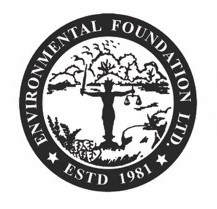
The intrinsic inter-relationship between environmental conservation and the affirmation of human rights has been acknowledged not only through numerous multilateral environmental agreements such as that of Aarhus and Espoo , but also through human rights treaties such as the International Covenant for Civil and Political Rights (ICCPR) ,International Covenant on Economic, Social and Cultural Rights (ICESCR),European Convention on Human Rights (ECHR), the American Convention on Human Rights (AmCHR), and the African Convention on Human and Peoples’ Rights (AfCHPR) and has also been woven into the bases of multiple Sustainable Development Goals. The role that human rights and the relevance therein in ensuring public participation in environmental decision making is fundamental in fostering accountability and transparency in environmental policy building frameworks as well as creating a sustainable and equitable basis for environmental conservation.
How do human rights relate to environmental conservation and environmental decision making?
The need of maintaining a higher standard of environmental quality and human welfare underpins a number of human rights. These include civil and political rights, such as the rights to life, property, health and a healthy environment as well as cultural and social rights such as rights to health, water, food, and culture. The violations and breaches of these rights are triggered by environmental degradation and the undesirable consequences that follow. The Stockholm Declaration acknowledges that “both aspects of man’s environment, the natural and the man-made, are essential to his well-being and to the enjoyment of basic human rights-even the right to life itself.” It also, through Principle 1, proclaims the following “Man has the fundamental right to freedom, equality and adequate conditions of life, in an environment of a quality that permits a life of dignity and well-being, and he bears a solemn responsibility to protect and improve the environment for present and future generation” and thereby acknowledges that man’s right to life itself is inseparable and vitally connected to his duty to protect the environment.
The intersection between many key procedural rights and environmental rights is fundamental in identifying the significance of public participation in environmental decision making processes. In addition to the right to participation in decision-making, the right to access to justice and the right to information have also been found as fundamental procedural tools for democratizing environmental protection processes.
The right to participation in decision making as a procedural necessity to promote sustainable development and environmental protection underpins the very essence of the Rio Declaration; Principle 10 quotes “Environmental issues are best handled with the participation of all concerned citizens, at the relevant level. At the national level, each individual shall have appropriate access to information concerning the environment that is held by public authorities, including information on hazardous materials and activities in their communities, and the opportunity to participate in decision-making processes. States shall facilitate and encourage public awareness and participation by making information widely available. Effective access to judicial and administrative proceedings, including redress and remedy, shall be provided.” In addition, Principle 11 which advocates for “enact[ing] effective environmental legislation” and Principle 13 which advocates for “develop[ing] national law regarding liability and compensation for the victims of pollution and other environmental damage” also reiterate the need for implementing procedural frameworks which effectively balance the right to justice and the duty of the state and its citizens to protect the environment.
The United Nations Economic Commission for Europe (UNECE) Convention on Access to Information, Public Participation in Decision-making and Access to Justice in Environmental Matters, also known as the Aarhus Convention, although limited in application, is revolutionary piece of international law which affirms multiple procedural rights relating to the environment. In its preamble it recognizes man’s right to live in an environment adequate to his health and well-being and his duty to protect and improve the environment and proceeds to acknowledge that in order to be able to assert this right and observe this duty, he must have access to information, be entitled to participate in decision-making and have access to justice in environmental matters. In Article 1, the convention proceeds to place an obligation on the state parties to guarantee the rights of public participation in decision-making, access to information, and access to justice in environmental matters.
The importance of public participation in environmental decision-making as a procedural right
Even though the idea of democratization continues to be one of the more obvious and most compelling reasons as to why public participation is crucial as a procedural right in the contexts of environmental decision-making , it is not the only reason. Participation ensures the implementation of better informed, fair and equitable policies as it provides a platform for an entire cross-section of society to voice their concerns on the impact of proposed activities on their lives and livelihood and to propose and negotiate alternatives through discussions with policy makers and experts. Not only will this foster mutual accountability and good governance but it will also confer legitimacy on any activity or decision.
In order for the benefits of affirming public participation as a right to be reaped, the process through which it is mandated and encouraged must be fair and be inclusive of a wide range of actors (community members, government agency staff, civil society actors, etc.). Sufficient time should be provided for true and complete participation and the access to participation must be equitable, especially for those who might be marginalized or vulnerable. This might entail providing technical or financial assistance and having regard to linguistic and cultural sensitivities.
The right to participate in environmental decision-making in Sri Lanka via the EIA process
The Environmental Impact Assessments or Assessments of Environmental Impact (AIE) are defined by International Association for Impact Assessment (IAIA) as “formal and systematic process[es] that include identifying, predicting, evaluating, and mitigating the biophysical, social, and other relevant effects of development proposals prior to major decisions being taken and commitments made”.
In Sri Lanka this process is carried out in two processes, depending on the intensity of the environmental impact posed by the proposed project/activity; large scale projects undergo an “Environmental Impact Assessment” (EIA ) while projects which do not pose significant environmental impact will undergo a shorter and simpler survey by the name of “Initial Environmental Examination” (IEE).
The AEI process in Sri Lanka provides for public participation with regard to EIAs in the National Environmental (Amendment) Act, No. 56 of 1988. It obligates state agencies by the name of project approving agencies or PAAs to obtain EIA reports from project proponents and make those reports available for public inspection. The PAA must make the public aware via Gazette and one newspaper in each of the national languages of where and when the EIA report will be available for inspection and invite the public to make comments. The members of the public can send their comments of the EIA report within 30 days of the notice of the report’s availability for inspection and review. If the PAA decides that a person’s comments are appropriate to be heard in public interest, it can provide the opportunity to do so. The comments as well as any other material gained from the hearing shall be given regard when considering whether the project will be granted approval. It should be noted however that this process is limited only to the EIA process; the IEE does not entail any sort of mechanism for public participation.
In assessing whether the AEI process within Sri Lanka is truly indicative of a well-affirmed and well-protected right to participate in decision-making, the stages of the process at which the public is involved, the time which is allocated for the public to contribute, the actual consideration given to the comments made by the public as well as the tangible action taken based on those comments must all be given regard. The Sri Lankan state has a constitutional duty to protect, preserve and improve the environment for the benefit of the community (Article 27) and it is vital that we construe this obligation as means of facilitating our duty and right to participate in the processes which decide the fate of the environment and our future.

BY: Piyumi Wattuhewa
Bibliography
- “Aarhus Convention.” n.d. European Commission. <https://ec.europa.eu/environment/aarhus/>.
- Central Environmental Authority . n.d. <http://www.cea.lk/>.
- Council of Europe Publishing. “Manual on Human Rights and the Environment.” 2012.
- “Declaration of the United Nations Conference on the Human Environment.” n.d.
- Division of Environmental Law & Conventions, United Nations Environment Programme. “Factsheet on Human Rights and the Environment.” Nairobi, June 2015.
- “Rio Declaration on Environment and Development.” n.d.
- Springer, Jenny, Jessica Campese and Michael Painter. “Conservation and Human Rights:Key Issues and Contexts;Scoping Paper for the Conservation Initiative on Human Rights.” October 2011.
- “The Constitution of the Democratic Socialist Republic of Sri Lanka.” n.d.
- United Nations Environment Programme. “Issue Brief: SDG 16 Human Rights and the Environmental Rule of Law.” n.d.






No comments yet.